Reduced stomatal density in bread wheat leads to increased water-use efficiency
- PMID: 31172183
- PMCID: PMC6760291
- DOI: 10.1093/jxb/erz248
Reduced stomatal density in bread wheat leads to increased water-use efficiency
Abstract
Wheat is a staple crop, frequently cultivated in water-restricted environments. Improving crop water-use efficiency would be desirable if grain yield can be maintained. We investigated whether a decrease in wheat stomatal density via the manipulation of epidermal patterning factor (EPF) gene expression could improve water-use efficiency. Our results show that severe reductions in stomatal density in EPF-overexpressing wheat plants have a detrimental outcome on yields. However, wheat plants with a more moderate reduction in stomatal density (i.e. <50% reduction in stomatal density on leaves prior to tillering) had yields indistinguishable from controls, coupled with an increase in intrinsic water-use efficiency. Yields of these moderately reduced stomatal density plants were also comparable with those of control plants under conditions of drought and elevated CO2. Our data demonstrate that EPF-mediated control of wheat stomatal development follows that observed in other grasses, and we identify the potential of stomatal density as a tool for breeding wheat plants that are better able to withstand water-restricted environments without yield loss.
Keywords: Cereals; drought; photosynthesis; stomata; water-use efficiency; wheat.
© The Author(s) 2019. Published by Oxford University Press on behalf of the Society for Experimental Biology.
Figures
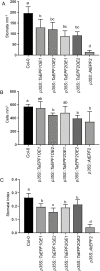
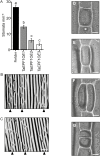
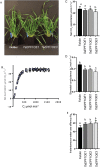
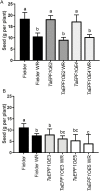
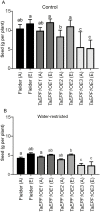
References
-
- Ainsworth EA, Rogers A. 2007. The response of photosynthesis and stomatal conductance to rising [CO2]: mechanisms and environmental interactions. Plant, Cell & Environment 30, 258–270. - PubMed
Publication types
MeSH terms
Substances
Grants and funding
LinkOut - more resources
Full Text Sources
Other Literature Sources

